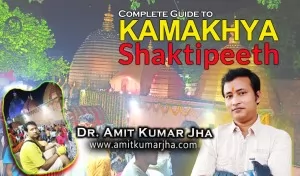Maa Kankaleshwari Temple, Burdwan: Legend, Rituals & Spiritual Insights
Discover the spiritual, historical and ritual details of Maa Kankaleshwari Temple in Burdwan—timing, bhog, darshan, auspicious hours, Bhairab, river, mantra and more.

Hidden within the spiritual tapestry of Bardhaman (Burdwan) lies the enigmatic Maa Kankaleshwari Temple, also known as Chamunda Kali Mandir. This distinctive Navaratna-style (nine-pinnacled) temple stands proudly in Kanchannagar, drawing pilgrims and seekers who sense the raw intensity of its deity—Kankaleshwari, the skeletal Chamunda form of Kali, believed to be over 250 years old.
The temple opens daily for the common from 9:00AM to 8:00PM
- Reach Burdwan Railway Station; take an auto or toto (~20 min) to Kanchannagar
- No entry fee. Photography is allowed, though best to ask before entering sanctum

Devotees are offered Sandhya-kalin bhog—vegetarian prasad served in evening—reported as “equivalent to amrita”
- Remove footwear before entering the courtyard.
- Simplicity in clothing is encouraged; modest attire preferred
- Photography allowed with consent; priests are tolerant if approached respectfully
- Participate mindfully during bhog offerings and evening aarti.

While general darshan hours are 9:00AM to 8:00PM, it's believed the best spiritual hours are early morning and twilight. Major rituals are held during:
- Kartik Amavasya: powerful new-moon puja.
- Kali Puja: Maha‑ratri evening worship and fire Aarti.

Local traditions differ. Some say the skeleton Kali idol surfaced around 1700 AD when Damodar River receded
The skeletal form aligns her with Chamunda, one of the fierce Matrikas, described in the Devi Māhātmya:
“चण्डमुण्ड उन्मूलित दारुणं रक्तबीजास्त्रयम्।”
“Chaṇḍamuṇḍa unmūlita dāruṇaṁ raktabījāstrayam.”
Meaning: “She uproots fierce demons like Chanda, Munda and Raktabīja.”
As per the Vāraha Purāṇa, Kali appears from Parvati’s fury: “Kālī rūpeṇa chaiva Pralayam arghate pumān”, signifying the destructive yet purifying power of Kali.

Within the temple complex stands a terracotta Bhairav shrine—symbol of divine guardianship
Devotees attest to fulfilled vows—protection from misfortune, healing, and spiritual awakening—especially upon consistent participation in bhog rituals or definitive Kali Puja involvement in Kartik month.
The beautiful kund filled with beautiful fish
Just beside the temple and the havan area, is a beautiful pond where you can see beautiful arrangements for sandhya arti. The pond is full of large and beautiful fishes, including the gold fish. You are free to feed the fish and the fish food is available at the nearby seller at a very low price.
Mantra for Devi Kankaleshwari

Gaṇdharva and tantric texts suggest:
“ॐ कंकलेश्वरीं च विद्महे, कंकलमूलाय धीमहि। तन्नो चामुण्डा: प्रचोदयात्॥”
“Om Kankaleśvarīṁ cha vidmahe, kaṁkalamūlāya dhīmahi। tanno cāmuṇḍāḥ prachodayāt ॥”
Meaning: “We contemplate the Goddess Kankaleshwari, who is rooted in bones; may that transformative Chamunda inspire our awakening.”
- Air: Nearest airport > Kolkata; then train to Burdwan.
- Rail: Bardhaman station → local auto/toto to Kanchannagar (~5 km).
- Road: Direct from NH19 via Burdwan city → temple.
The Maa Kankaleshwari Temple of Burdwan offers more than ritual—it embodies the fierce grace of divine destruction and rebirth. The Navaratna architecture, Krishna-Bhairav co-presence, and potent Chamunda form make this temple a visceral symbol of protection and spiritual reawakening.
Whether you’re drawn by devotional duty, tantric attraction, or cultural curiosity, a visit promises both shakti (power) and solace—nestled within the heart of West Bengal’s sacred landscape.













